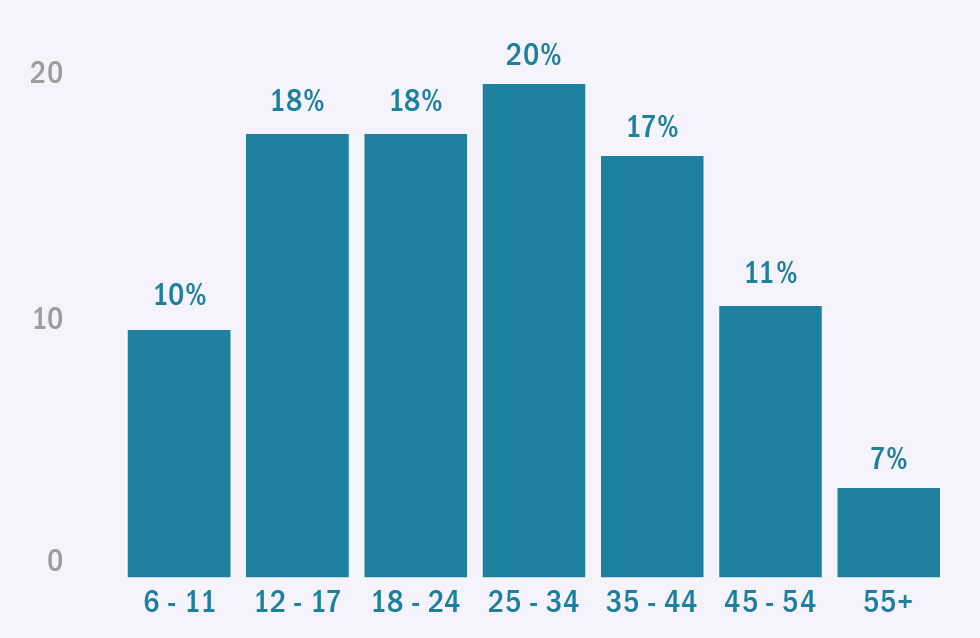
#Trendlecciones
Electoral Searches In Mexico 2018

Electoral Searches In Mexico 2018

Google’s Trends Analysis is a tool that compares search frequency through specific periods of time. It allows us to explore the popularity of terms, words, or personalities, within the regions and time periods defined by us 1, and it can show us search terms related to them. For example: If we are looking for information about the term AMLO (Andrés Manuel López Obrador) in the past year, Google Trends will display a popularity graphic within those 12 months. We would most likely see that López Obrador’s popularity has risen in 2018 due to the fact that he is a presidential candidate and elections will be held this year. Additionally, Google Trends reveals related search terms to AMLO, in this case they are: Ricardo Anaya, López Obrador’s proposals, el Universal, la Jornada, surveys, and amnesty, amongst others.
As in every exploratory method we need to know what to search and how to search. Furthermore, we need to take into account what these results show us and what we cannot define or interpret through them. Finally, it is important to contextualize the data, in other words to place them in the space and time of this trends analysis; which in this case is Mexico during an electoral year.
These results deliver information, not only about a term’s search frequency but also about the conexions, searches’ temporality, and interests related to those who search for a particular term, such as ‘Anaya’. For example, we see that searching for a specific candidate can show us related concerns surrounding economic or political issues, while other searches can relate more to personal facts such as the candidate’s families, their husbands/wifes, or their career path. In other words, google searches reveal the associations we make while we search and how they are configured and transformed over time.
However, search interest do not necessarily translate into preference. Namely, to search for AMLO, Anaya, Meade or ‘El Bronco’ cannot be translated directly as support of the electorate. It could even mean the opposite: moments where we search for candidates we are opposed to, or the candidate who we most dislike. Therefore, it does not allow us to make inferences about a candidate’s possible victory (or loss), but it does allow to know how a specific event, quote or keynote evoked interest, and if a particular candidate is associated in positive or negative ways to certain issues. For example: if the search terms are related to things like corruption, we can deduce that this person is being associated with negative concepts, while if another candidate is often associated with things as battling poverty or ‘hope’, this could lead us to infer that their related terms are a positive thing.
This trends analysis will also not tell us how many people made specific searches because, as its name inferes, what it shows us are tendencies, patterns, associations and search frequency within an established period. Trends analysis delivers information about the relative popularity of a term, words, concept, people, events, etc. Data obtained through Google Trends is standardized and it displays within a 1 to 100 scale, where 100 represents the maximum search interest through a established space/time. Searches that appear in Google Trends are those that surpass a certain threshold: not every search is visible, only those who obtain a high traffic demand (determined by Google).
Google Trends does not give details about who’s making those searches. However, since Googling anything requires an internet connection we can get insights about the people behind those searches. According to the The 2017 National Survey on Availability and Use of Information Technologies in Households (ENDUTIH), published by the INEGI, Mexico has 71.3 million internet users, and this number approximately represents a 55% of the country’s total population (129 million population according to the UN in 2017). Information search, user-to-user interaction and entertainment are the most common uses of the internet in Mexico. This is relevant not only because of the growth of new internet users worldwide (from 8% to nearly 60% within 15 years) but also due to the rising frequency and intensity in use of this tools to obtain information and communicate with others. Ten years ago, 23% of those who claimed to be internet users said that they logged in daily, today, more than 80% of the internet users log in at least once a day.
| To obtain information | 96.9% |
| To communicate with others | 90% |
| Entertainment | 91.4% |
| As a support for studying | 70.9% |
| To access social networks | 76.6% |
| Bank operations | 12.9% |
| Government related issues | 28% |
| For multimedia content | 78.1% |
| Software downloads | 50.2% |
| Online shopping | 16.6% |
| To read magazines, books or newspapers | 49.4% |
| Others | 28% |
| Source: ENDUITH, INEGI, 2017. |
However, not everyone uses the internet in the same way or with the same frequency. For example: young people do log in more often than older generations. People between 6 and 24 years old represent almost half of the internet users in Mexico, while people older than 45 are not close to the 20% mark. The population that is able to vote represents a 73% of the internet users in Mexico.
 Fuente: ENDUITH, INEGI, 2017. Gráfico de elaboración propia
Fuente: ENDUITH, INEGI, 2017. Gráfico de elaboración propia
In geographical terms, Internet use is concentrated within urban areas, where 86% of Internet users in Mexico are located.
Google’s Trends analysis allows free, fast and (relatively) easy access to millions of data in what is (probably) the largest real-time database in the world. The importance of this real-time characteristic is that we can see almost immediate reactions to events that we consider to be important or interesting. In addition, it displays fluctuations in interest, association and spatial segregation that would be harder to perceive in other tools for that measure public opinion.
1 Google Trends data is available starting 2004, and has been subject to a couple methodological modifications since then. In January 2011, the geographical assignation tool was improved and in 2016 the data collection system was also improved.